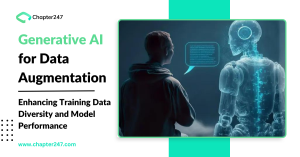Businesses and organizations are increasingly using data analytics in the dynamic world of social media to obtain insightful information.
One of the biggest challenges in extracting relevant information from social platforms is the sheer volume of unstructured data generated. To address this, effective data engineering procedures are necessary.
We’ll go over the necessary steps for managing huge amounts of unstructured data for social media analytics in this guide.
Understanding the unstructured data landscape
Social media networks generate a wide range of data categories, from textual information in posts and comments to multimedia elements such as photographs and videos. This diversity requires a sophisticated approach to data engineering, as typical methods struggle to handle the complexity and volume of unstructured data.
Data Collection and Ingestion
The journey begins with data collection across multiple social media channels. Platforms like Twitter, Facebook, and Instagram offer Application Programming Interfaces (APIs) that allow for organized data retrieval. However, these APIs may not cover all the data, especially multimedia content, necessitating the use of web scraping tools.
Data Cleaning and Preprocessing
Unstructured data, by definition, often contains noise, errors, and irrelevant information. Data cleaning is an important process that includes deduplication, resolving missing information, and removing extraneous content.
Natural language processing (NLP) techniques such as sentiment analysis and entity recognition are useful for extracting important insights from textual data.
Storage and Retrieval Strategies
Efficient storage and retrieval techniques are critical for managing huge amounts of unstructured data.
Databases such as MongoDB and Apache Cassandra provide flexibility in maintaining various data kinds and enable speedy retrieval based on certain criteria. Distributed file systems, such as Hadoop Distributed File System (HDFS), enable parallel processing, resulting in faster data access and analysis.
Implementing Machine Learning Models
Machine learning is the engine that drives the extraction of useful insights from social media data. Supervised learning models can be taught to analyze sentiment, model topics, and anticipate user behavior.
Visualizing Insight for Impact
Any analytics project relies heavily on the capacity to effectively communicate insights. Data visualization tools such as Tableau, Power BI, and open-source equivalents like Matplotlib and Plotly are essential for creating dynamic and informative visuals.
Continuous Monitoring and Maintenance
The world of social media is dynamic, and so should the analytics infrastructure. Continuous monitoring of data pipelines and systems is required to ensure their integrity and effectiveness.
Implementing alerts for abnormalities, upgrading machine learning models with new data, and regularly reviewing and optimizing the entire data engineering process are vital steps in maintaining a reliable social media analytics framework.
Conclusion
As businesses attempt to remain competitive in the digital age, mastering data engineering for social media analytics has become a strategic priority. From the start of data collecting to the display of insights, each stage in the process helps to uncover the potential hidden inside massive amounts of unstructured social media data.
By using the tactics indicated in this guide, businesses can turn the data flood into a source of actionable insight, propelling them forward in the ever-changing field of social media analytics and if you need any help Chapter247 Infotech will be the best option for you.








